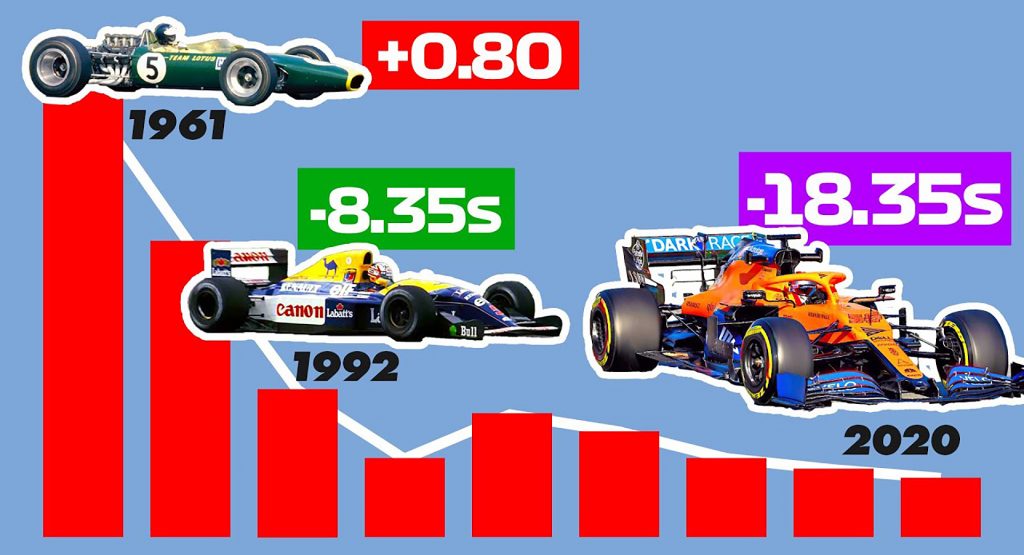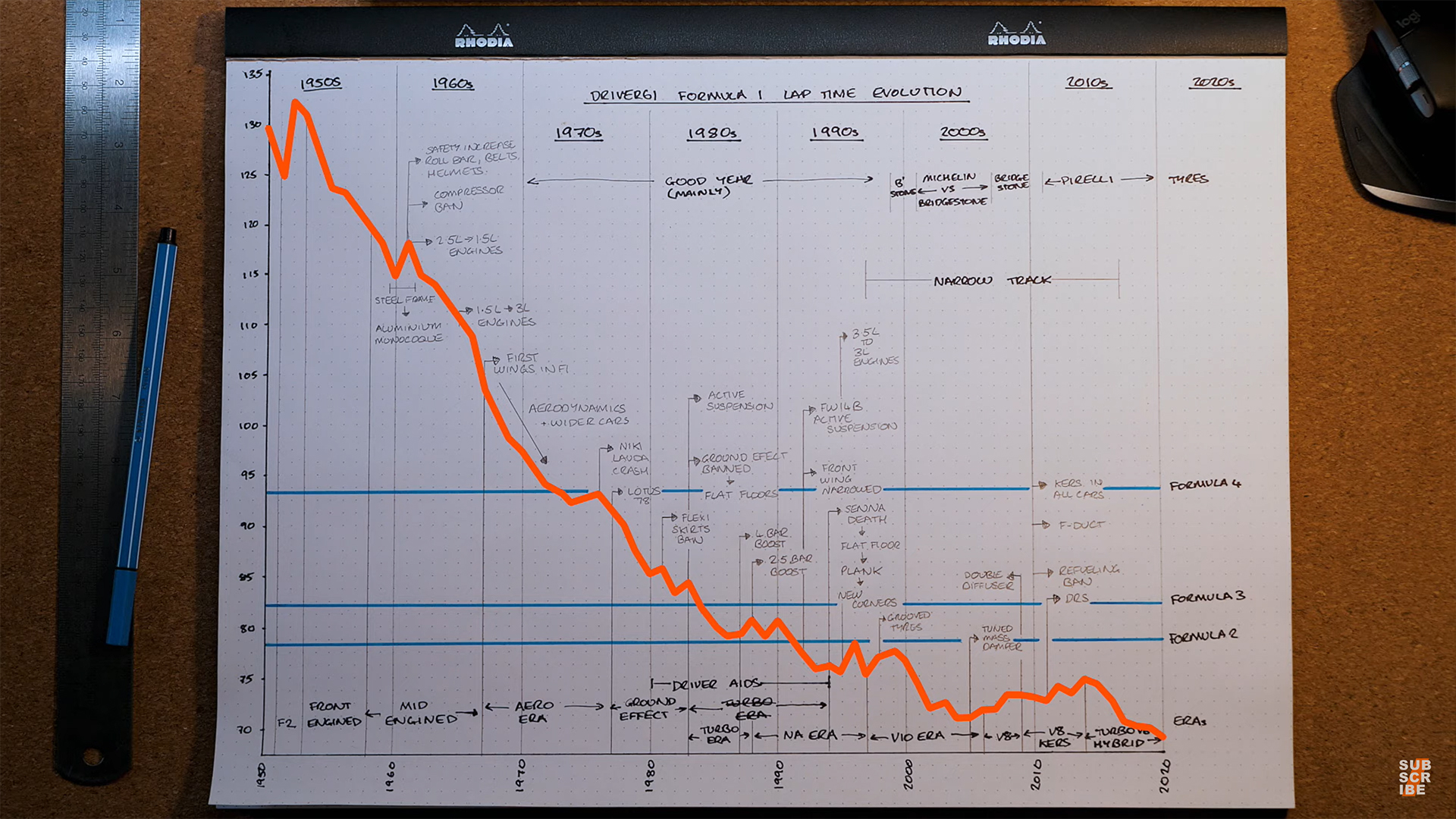Formula 1 has always been the pinnacle of motorsport, but as technology advances, this inevitably results in faster cars. In Driver61’s newest video, they break down how F1’s lap times have improved over the years, giving an interesting insight into the progression of technology in the sport.
Driver61 made a chart, the data of which was obtained by breaking down the fastest lap times from every race of every season to date to understand the relative pace difference for each year. To increase the usefulness of the data, the chart also takes into account things like major rule changes, alterations to track layouts, and other factors as a way to provide context.
Read More: Why Crashing In F1 This Year May Be More Costly For Teams Than Ever
The biggest improvements in lap times came in the 1950s, when the cars made the shift to a mid-engine layout, the late 1960s, when engineers were starting to get really creative with solutions for maximizing handling, and the early 1970s, with the advent of serious aerodynamics. These reduced lap times by 10, 11, and 12 seconds respectively, while other significant regulation shifts in the late 1970s, mid 1980s, early 1990s, and early 2000s, saw lap times improve by 8, 5, 5, and 4 seconds respectively. After the introduction of the V6 hybrid power units in 2014, lap times have been getting increasingly quicker until this year, where the focus was placed more on competitive racing rather than outright speed.
With all that being said, not every regulation change made the cars quicker. These were also many changes made in the name of safety, while others intended to even out the playing field. Improvements in safety after Niki Lauda‘s horrendous accident in 1976 and Ayrton Senna‘s fatal crash in 1994 led to lap times getting slower by 2 and 3 seconds respectively, and in terms of changes made to closer racing, there were quite a few throughout the years, and all of them saw around a 2-4 second increase in lap times.
See Also: How F1 Driving Games Went From Laughably Shabby To Incredibly Realistic
Finally, to give a frame of reference, Driver61 included blue lines on the chart that represent the fastest lap times of the 2020 Formula 2, Formula 3, and Formula 4 cars. Interestingly, current F4 cars match the speed of early 1970s F1 cars, modern F3 cars are as fast as the early 1980s F1 cars, and present-day F2 racers can keep up with early 1990s F1 cars.
To see Driver61’s incredibly detailed analysis on the subject in full, you can check out the video below.




